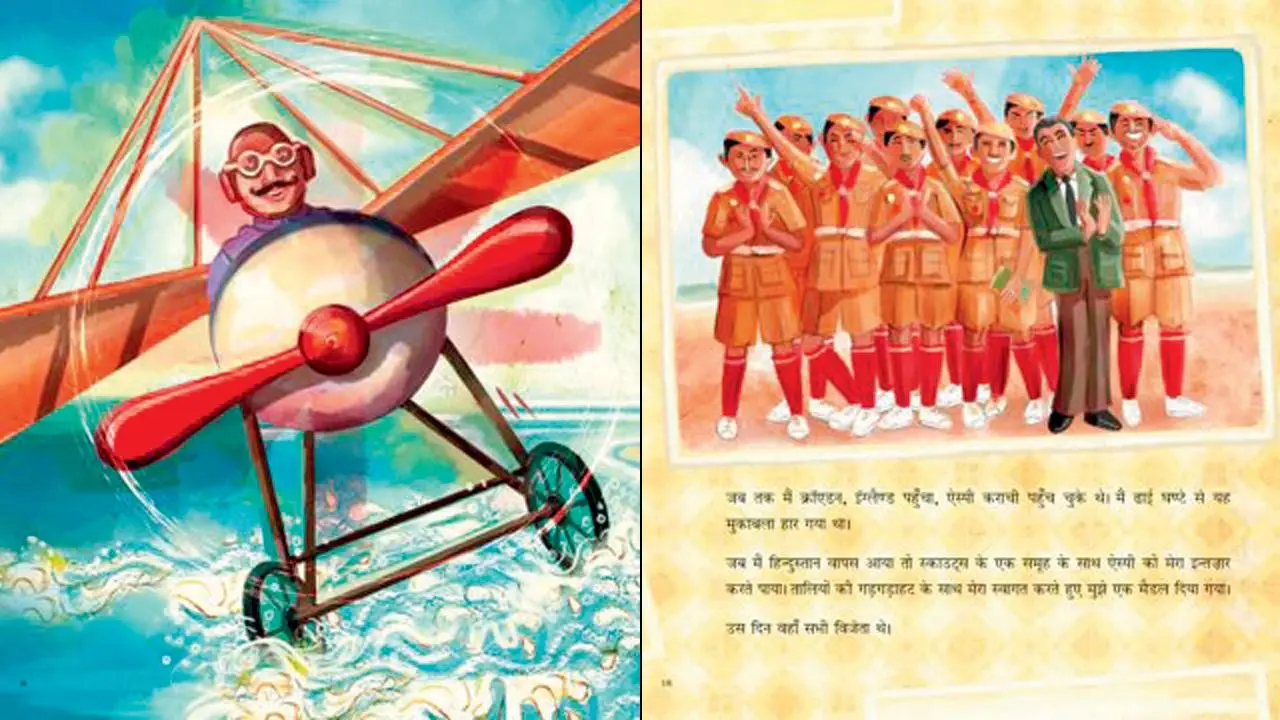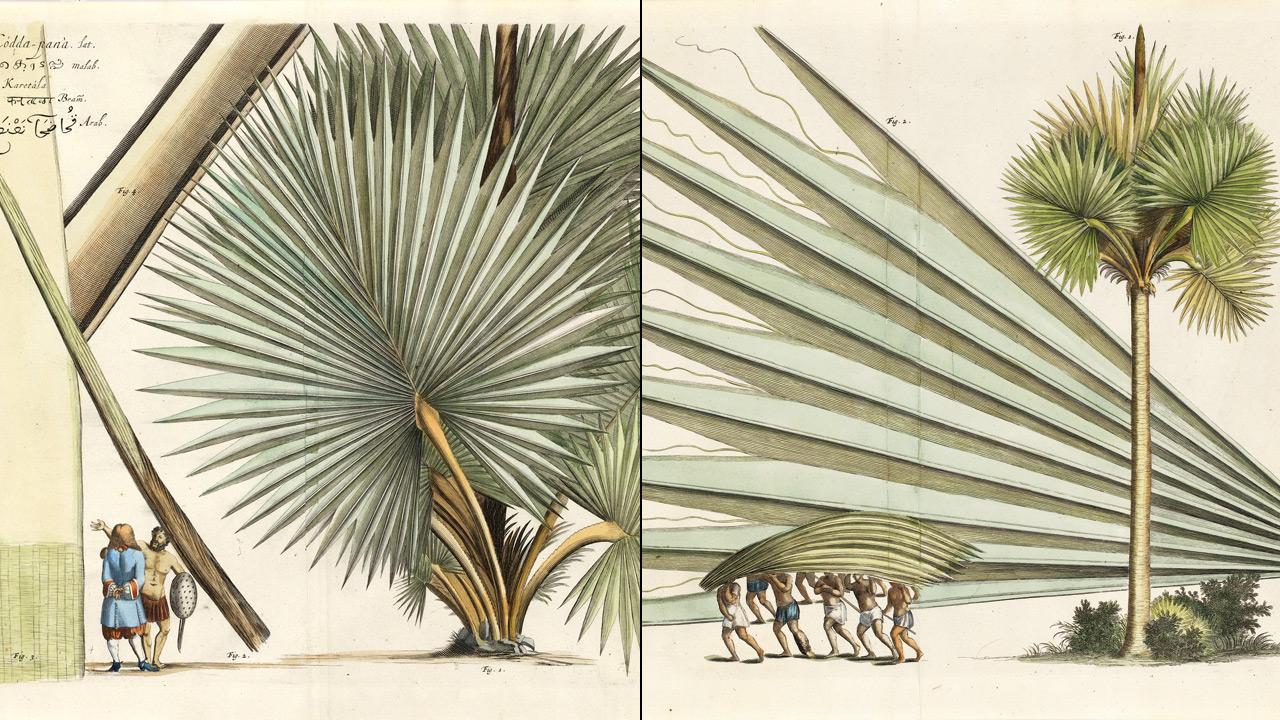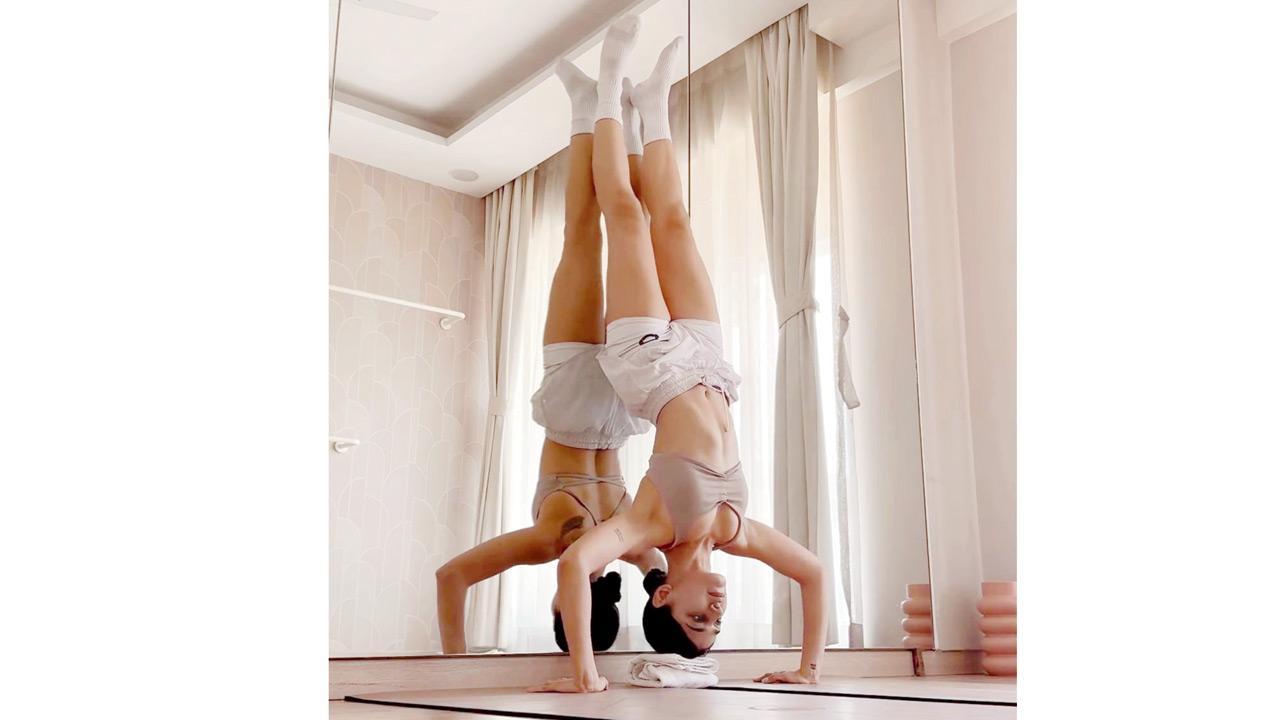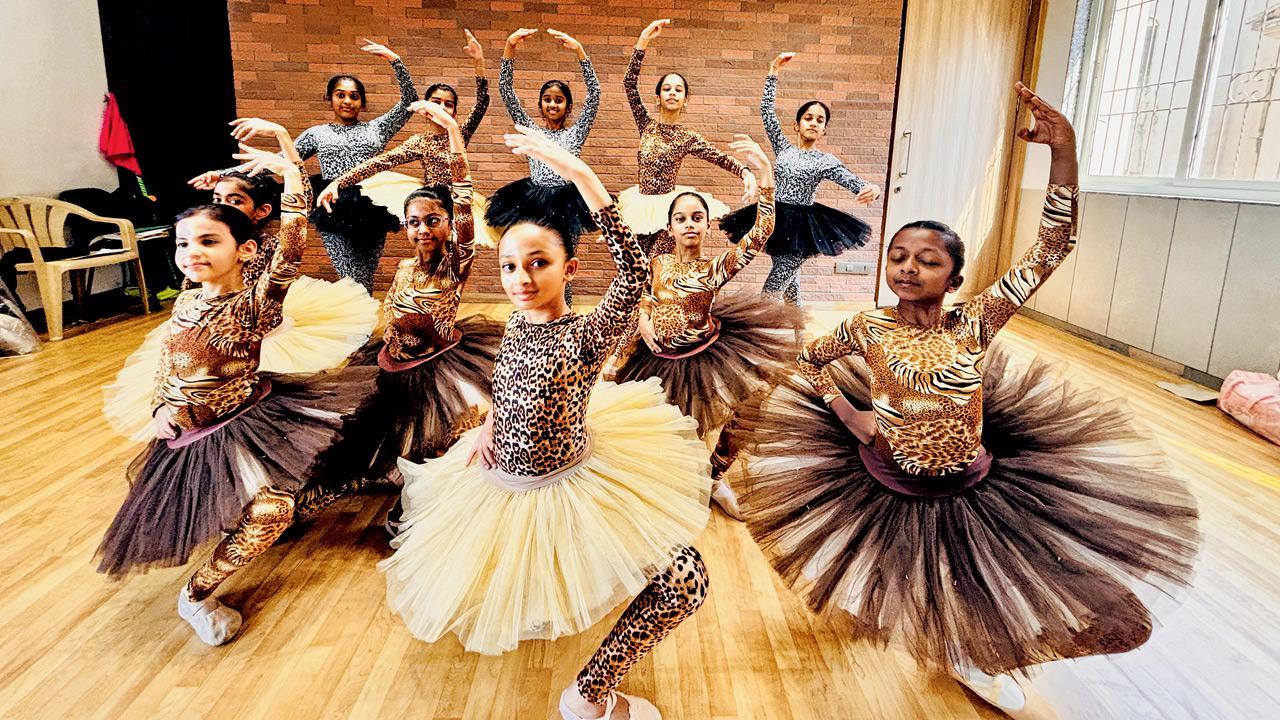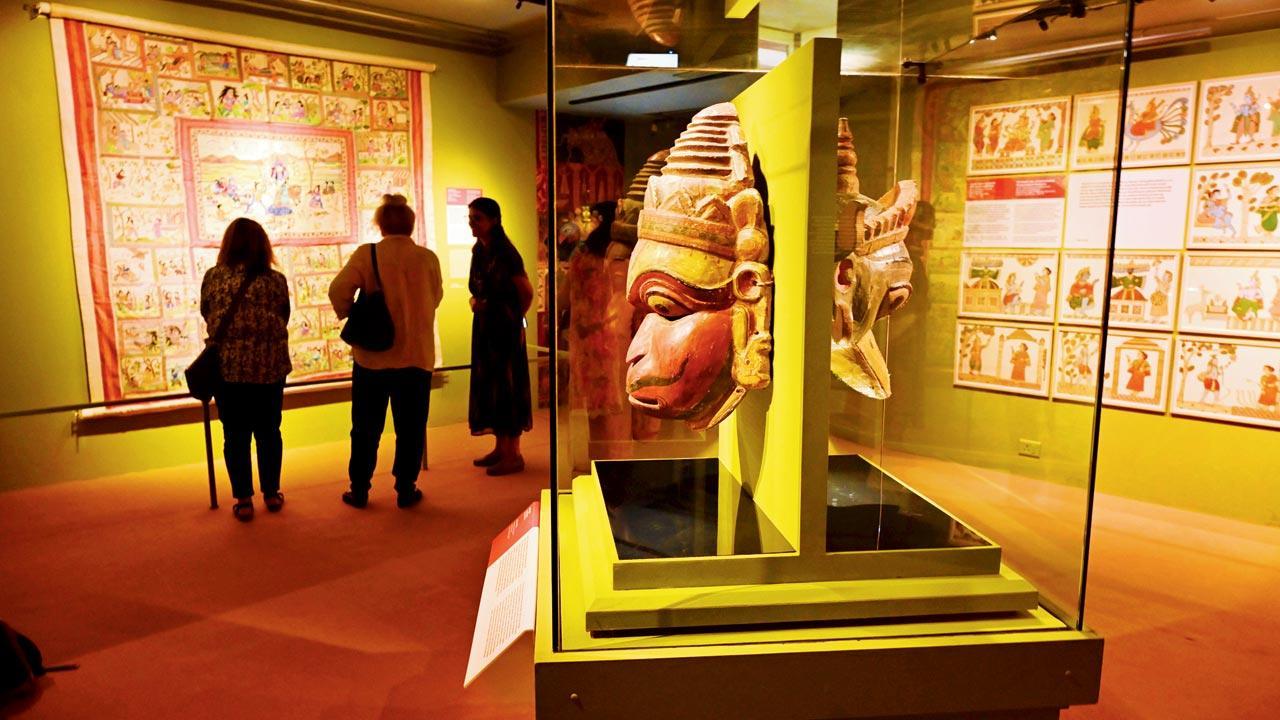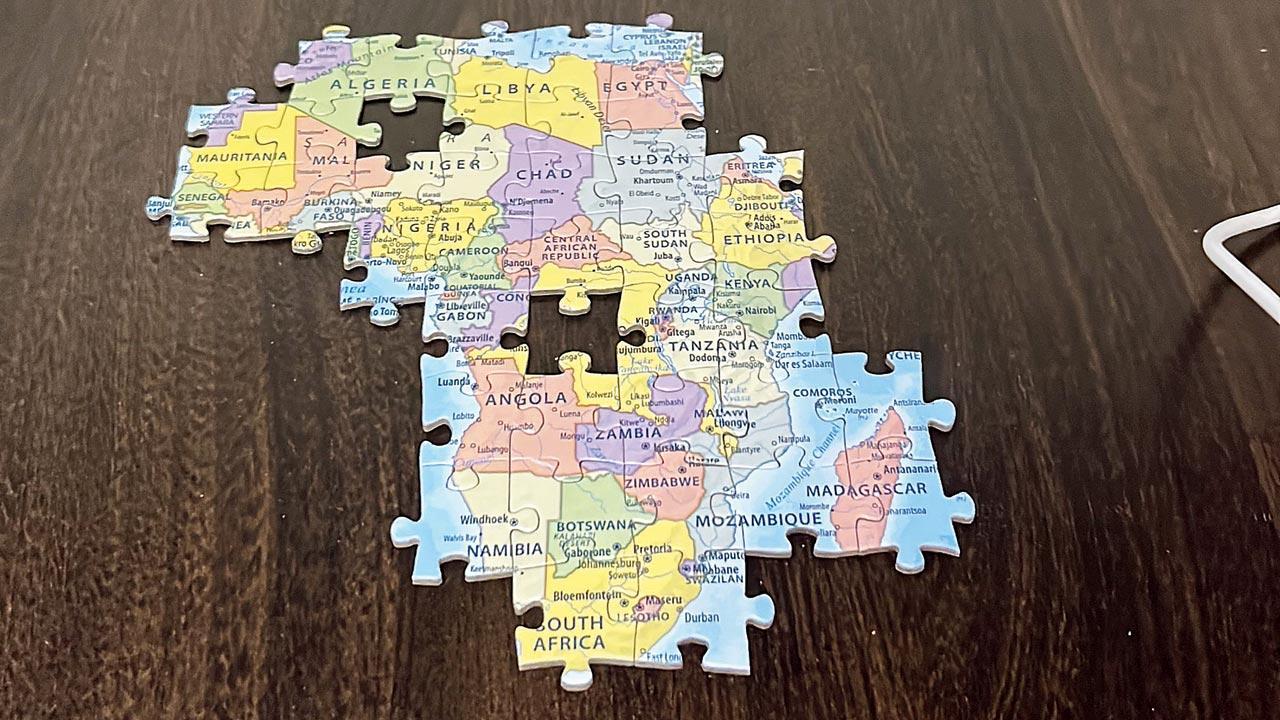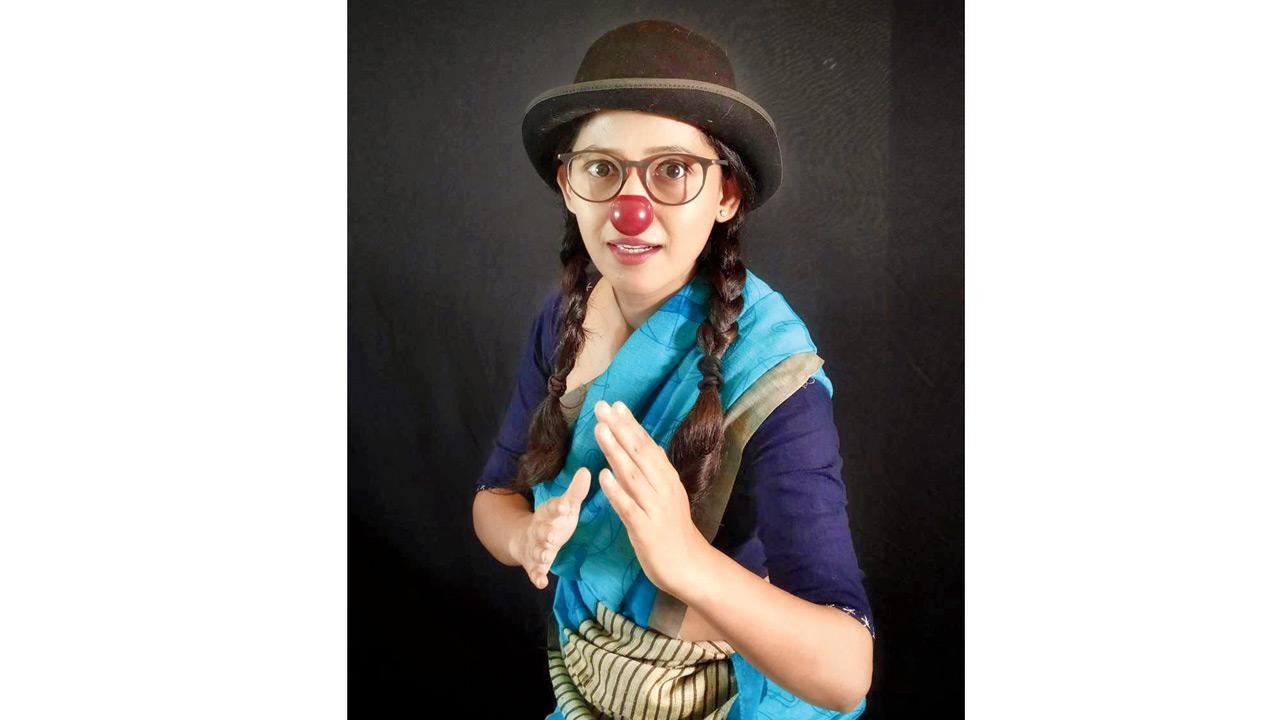Read Things To Do News
Starry, starry sights: This exhibition pays tribute to painter Vincent van Gogh
Bring up sunflowers, starry skies or cypresses and the mind recalls Vincent van Gogh’s works. With bold, textured strokes and an imagery that relies on sensual perception, the works of the Dutch artist have been heralded as one of the finest in the post-impressionistic period, even influencing an Academy Award-nominated film, Loving Vincent. This weekend, two city-based artists, Aadnya Manerkar and Aayush Shah will pay tribute to the painter on his 172nd birth anniversary through Brushstrokes and Beyond, an exhibition of digital artworks and paintings, at a restaurant in Andheri West. While an eatery might sound an unlikely space for an art display, Luv Deshpande, founder, Luv restaurant, believes otherwise. “We’ve always had a strong connection to art, as seen in head chef Akash Deshpande’s culinary creations that often take inspiration from famous artworks. Recently, he created a dessert inspired by The Starry Night. Celebrating van Gogh’s birthday month by highlighting Manerkar and Shah’s talent feels like a fitting expression of our restaurant’s artistic spirit,” Deshpande shares. Quite apt, since the connection with the artists was built over food. “We connected with Aadnya after she visited us for a dinner. Sometime later, she messaged us that a friend, Aayush Shah, had created a few van Gogh paintings, and asked if we would be interested in showcasing them. Incidentally, we were in the midst of planning an exhibition ourselves,” Deshpande reveals. (From left) The painter and his pain, 2021; untitled, 2021. Pics courtesy/Aadnya Manerkar For Manerkar, painting provides her with avenues to explore the coming together of reality and imagination. “As a surrealist artist, my approach to art is often anchored in precision and detail. van Gogh’s art, by contrast, thrives on a sense of motion, freedom, and imperfection. The fluidity of his brushstrokes is liberating, almost rebellious, and it inspires me to trust instinct over design. What I admire the most is how his work channels raw emotions,” the 25-year old explains. Manerkar’s pieces pick up on van Gogh’s iconic motifs and reinterpret them in flowing dreamscapes of imagination, symbolising the artist’s emotional struggles — a trait that also finds resonance in the digital artworks of Shah. “My practice is rooted in digital art and Impressionism, where music and emotion shape my use of colour and motion. His [van Gogh] fearless authenticity inspires me. The red and green interior of The Night Café hit me during a tough time, its raw tension pushed me to explore emotional depth through the digital medium. I have tried to emulate the same raw emotion — inviting others to feel rather than just see his world,” Shah adds. With this, the artists also plan to paint new works on the day of the exhibition. Aadnya Manerkar and Aayush Shah With multiple pop culture iterations, from memes to trendy tote bags, t-shirts and merchandise, van Gogh’s works have become a highly popular and reproduced form of artistic consumption. Does this in any way reduce the emotional depth and gravity inherent to his paintings? “While I don’t always agree with the over-commercialisation, I recognise that these things play a role in keeping his spirit alive for the younger generations,” Shah explains. Manerkar says, “The widespread reproduction of van Gogh’s work can sometimes overshadow the emotional depth he intended. Yet, it’s inspiring to see his art resonating with so many of us. Our showcase is a humble attempt to reconnect people with the soul behind the surface.” ON March 30; 7 pm onwardsAT Luv Restaurant, Sterling Apartments, Sundervan Complex Road, Lokhandwala Complex, Andheri West.
29 March,2025 09:02 AM IST | Mumbai | Divyasha PandaThis children's book revolves around JRD Tata's contribution to Indian aviation
MID-DAY: How did the storyline’s focus on JRD’s five flights emerge?NANDITA DA CUNHA: Writing about a figure as monumental as JRD Tata is no small task — his life was filled with contributions across industries and disciplines. By focusing on five milestone flights to frame JRD’s story, I was able to use each as a lens through which we could explore his journey, and highlight key moments, without overwhelming young readers. This also allowed me to connect his achievements in aviation, to the principles that guided his life, which are so inspiring for young readers. Be it the thrilling India-England solo flight race (1930) for the Aga Khan Prize, or piloting the historic first commercial flight for India (1932), each flight became an opportunity to showcase his qualities, [such as perseverance and risk-taking] in action. MD: Tell us about your research for this book. NDC: My research drew from multiple sources. I initially referenced several books that delve into JRD Tata’s life and achievements. The Tata Trusts and the Communications Teams, and exhibitions at the Tata Experience Centre (TXC) at Bombay House offered a deeper understanding of his legacy. The book is written in JRD Tata’s voice, so it was important to study his interviews, discussions with his biographer, and keynote speeches. Photographs from the Tata Central Archives, (TCA) Pune added a rich, visual dimension. MD: How did you ensure that the book connects with children?NDC: I focused on emotions, (the highs and lows of each milestone crossed), and universal values. Anecdotes brought the narrative to life in a relatable way for children. I started with his childhood, which allowed readers to connect with the younger JRD. MD: What lessons did you learn along the way, and what will children take away from JRD? NDC: There are so many inspiring values that made him an inspiring role model. His pioneering spirit drove him to accomplish great things, while his sense of adventure and sportsmanship underlined the importance of exploring the unknown. His determination and attention to detail showed that success often requires patience. He gave back selflessly. Above all, he always led by example and through collaboration. Young readers will learn that it’s possible to dream big, while staying immensely grounded.
29 March,2025 08:56 AM IST | Mumbai | Fiona FernandezKnow more about the history of Indian naturalism at this exhibition in Mumbai
Every society across the world has a mythical concept of the Tree of Life,” says Paul Abraham. Unknowingly, the conversation with the founder of the Sarmaya Arts Foundation brings back visuals of a green-hued Loki played by Tom Hiddleston holding together the strands of a mythical tree. This inherent and binding connection between nature, art, science and life in general is key to the latest exhibition, In The Dappled Light, that opens at the Fort gallery tomorrow. “Nature has been part of our existence in so many ways. An inspiration of art, a source of much of our medicine and health, resource for shelter and weather,” Abraham points out. The curator chose to address this spectrum through the lens of visual art. “We took three broad themes — nature in art, nature in science, and nature in spirituality. All of these are expressed in visual arts in our collection,” he says. The works, some dating back to the 16th Century, are brought together in a concept by the design practice, Pavitra Rajaram Design. Prakritik Jeevan by Japani Shyam, 2016 The founder’s interest in nature dates back to his work with the Sanctuary Nature Foundation. “It reinforced by the belief that art can be a powerful tool to connect young people with nature’s beauty. In today’s climate crisis, this connection is not just enriching — it’s essential for our survival,” he says. The indigenous communities recognised this truth, and internalised it. “For instance, a key deity of the Gond community, Bada Dev, lives in the trunk of the Saj tree [Terminalia elliptica]. This tree had the unique ability to store water in its trunk. In times of drought, it was an invaluable resource. This is why the community would never cut it down, and ritualised its preservation,” Abraham explains. Tree of Life in Kalamkari by Jonalaggada Niranjan, 2016 They were not alone in documenting science through art. The Colonials did the same, points out Abraham. Among the curation’s prized possessions is a 12-volume codified document, Hortus Malabaricus. A 17th Century treatise of trees and medicinal plants from Kerala, it was commissioned by the Dutch Governor General of Malabar, Hendrik Van Rheede, and supported by the King of Cochin, Prince Veera Kerala Varma. “The region was known for its practice of Ayurveda. Rheede’s botanists worked alongside Indian practitioners, including Itty Achudhan, to document the tree life across the Western Ghats,” he reveals. With over 740 plants marked out, the project was driven by science. “Yet, it is underlined by art. If you look at those works, they are exquisite,” he reiterates. In addition to the visual elements, the museum will turn to other senses such as smell to offer visitors an immersive experience. From fragrances of earth, tree bark, saffron and sage, visitors can tap into a deeper connection with select artworks through the ‘smellscape’. Abraham adds, “One more work in the curation is a 120-piece mosaic of botanical observations by Gopa Trivedi that touches upon the idea of natural life being part of a global community. Many of our plants, now irrefutably Indian, were imports. Chillies came from Mexico through the Portuguese, as did potatoes.” Sunderban (Durga like Tree), Tagar Chitrakar, 2023 This brings us back to the mythical Tree of Life whose branches spread across myths and cultural boundaries. “The tree of life in Gond or Saura art may be distinct in its artistic presentation, but at the same time they [the communities] understand that the tree stands for something more than aesthetics,” Abraham concludes. A necessary reminder in times of growing dust, concrete and heat. Paul Abraham From: March 29 to May 4; 10 am to 5 pm (Tuesday to Sunday)At: Sarmaya Arts Foundation, Lawrence & Mayo House, Fort. Log on to: urbanaut.app (to register for events/walkthroughs) Also check out A tree walk with Sananda MukhopadhyayON March 30; 7.30 amMEETING POINT The Alexandra Girls’ English Institution, Fort. COST Rs 1,200 Nature journaling workshopON March 30; 11 am onwardsAT Sarmaya Arts Foundation, Fort. (registration mandatory) Walk through Rani BaghON April 5; 9.30 amMEETING POINT Veermata Jijabai Bhosle Udyan, Byculla.(registration mandatory) Sarmaya x ALT EFF Wildlife screeningON April 5; 6 pm onwards AT Sarmaya Arts Foundation, Fort. COST Rs 250 Exploring birds workshop with BNHSON April 12; 10 amMEETING POINT Bombay Natural History Society, Hornbill House, Fort. COST Rs 1,000 Tales and Twirls performanceON April 13; 11 amAT Sarmaya Arts Foundation, Fort.
28 March,2025 08:53 AM IST | Mumbai | Shriram IyengarHow activewear is becoming more comfort-oriented this summer
Hot girl summer is finally here… but this time, it looks more relaxed and comfort-oriented than we remember it. Much of this shift has to do with what we’re wearing to achieve our dream gym bods — boxy baby tees, flared pants and loose shorts as opposed to coordinated sports bra-and-leggings sets in the pastel colour(s) of the season. Much of this shift can be attributed towards the growing trend of athleisure, which involves designing gym gear from the perspective of wearing these pieces in everyday settings, notes Mitali Ambekar. “People are prioritising versatility. Activewear that can get people from the gym to post-workout hangouts are gaining in popularity. Recent innovations in high-tech fabrics have blurred the boundaries even further,” she explains. Mitali Ambekar Healthy gains Dr Vaishali Joshi, a senior obstetrician and gynaecologist at Kokilaben Dhirubhai Ambani Hospital, is more than welcoming of this trend. “Body-hugging and tight clothes, especially during the summer, are a complete no-no. Tight undergarments, thongs, pants and even tight workout wear don’t allow the vagina to breathe. The natural creases in the genital area hold moisture longer. In hot and humid conditions, tight clothes can cause sweat to accumulate and linger, making you more prone to skin and vaginal infections. Such garments can also irritate and erode the skin’s creases, giving rise to abrasive dermatitis,” she says. Relaxed fits can help you stay cool. Representation Pic/istock “I always tell my patients that what you wear to the gym matters just as much as what you do there. In summer, looser workout clothes can really make a difference,” agrees Dr Niketa Sonavane, a dermatologist and founder of Ambrosia Aesthetics. “Loose clothes ensure better air flow, which keeps your skin cooler. You also feel more relaxed and confident, which means you are more likely to stick to your workout routine,” she says. From your skin’s perspective, wearing breathable fabrics such as cotton or moisture-wicking materials such as bamboo blends or technical fabrics made for activewear are optimal for the summer months. As Dr Sonavane points out, switching to breathable fabrics and looser fits can even reduce body acne. She cautions against synthetic fabrics such as nylon and polyester that trap sweat and create a warm, moist environment that’s perfect for bacteria and fungi to grow, resulting in acne, boils and fungal patches. Dr Niketa Sonavane and Dr Vaishali Joshi Style and substance While looser clothing can feel more breathable, it may not always be the best choice for workouts, cautions Jeff Bathija, personal coach at Mid-life Lifting Club. “Loose clothing can sometimes get in the way during workouts, especially for weight training or high-intensity movements. Well-fitted, sweat-wicking athletic wear allows for better movement and keeps sweat off your skin, while compression clothing can help with sweat evaporation and cooling, making it a good option even in summer. My personal preference is a mix of loose, balanced and tighter fitting clothing, depending on my workout,” he shares. Jeff Bathija (in white) works out in athletic wear (right) pair snug sportswear with relaxed joggers. Pics Courtesy/Jeff Bathija, Pinterest Just because your activewear prioritises comfort doesn’t mean it cannot be chic, assures Ambekar. “As a rule of thumb, pair oversized items with more fitted pieces. For instance, relaxed joggers are best complemented by a snug sports bra, while form-fitting leggings matched with an oversized t-shirt create a silhouette that’s effortlessly chic. You could also swap your regular leggings for high-waisted flared pants or palazzos. Invest in versatile pieces such as tops with inbuilt support and baggy joggers, and layer your sports bras and gym tees lightweight outerwear such as cropped hoodies, bomber jackets and sweatshirts for a streetwear-inspired vibe,” she suggests. To elevate your ensemble, up your accessories game with sleek sneakers, minimalist caps and stylish gym bags. Monochromatic and neutral colour schemes make your look more refined and cohesive. Choose muted and earthy tones such as beige, sage green, terracotta and coffee, she signs off.
28 March,2025 08:48 AM IST | Mumbai | Anindita PaulMumbai: Watch this adaptation of The Lion King set to ballet dance form
Ballet shoes fastened, hair slicked back and their skirts fluffed up one last time, 60 young ballerinas will await the opening tune to glissade onto the stage in Bandra tonight. It’s not Tchaikovsky, Stravinsky, or even Bach. It’s the slightly more familiar “Nant’s ingonyama bagithi baba!” If that doesn’t ring a bell, try reading it aloud to the tune of The Lion King’s opening theme song, Circle of Life. Comprising preschoolers, teens and young adults, the troupe will pull off a balancing act between the evergreen Disney classic and the structured discipline of Russian ballet. “The most recognisable part of a ballet performance is possibly the tutus. Layered, stiff skirts that jut out from the hip, carefully customised to fit the feminine themes and characters in the story. In our adaptation, these characters are lions, giraffes, meerkats and warthogs. We knew this adaptation was going to be a wild ride even before it began,” laughs Apeksha Bhattacharyya, founder of the Academy and a ballerina with 17 years of experience under her belt. Performers playing Mufasa (in red) and Scar practise a scene But this is not the troupe’s first rodeo. Seven years ago in the city, Bhattacharyya led an adaptation of Goldilocks and The Three Bears. “Ballet standards like Tchaikovsky’s Swan Lake or The Nutcracker are beautiful pieces, but I’m afraid they don’t speak to everyone. Imagine a young male child in the audience; would he really relate to the characters on stage?” she points out. Early last year, a re-watch of the Disney classic planted the seed of a new adaptation for young audiences in the instructor’s mind. Making of a jungle “We started with rewatching the classic on a loop. The team would mark scenes and movements to identify the most interesting parts. With some reference from previous Broadway productions, our choreography started taking shape,” Bhattacharyya tells us. A playful moment featuring Simba with Nala After multiple revisions, we’re glad to learn that the tutu dilemma was finally settled — animal prints and vibrant hues will bring the jungle to life tonight. But the costumes were the least of the troupe’s challenges. The founder recalls, “The hyenas in the popular stampede scene are played by our ballerinas who are accustomed to making calculated, graceful movements on their toes in pointe shoes. One wrong move in these shoes can leave you with a broken foot. How does one stage a stampede on tip-toes?” While we were let in on the secret, we suggest you head to the show tonight to find out for yourself. “We have been through every scene so many times that I can probably never watch the movie the same way ever again,” she admits. We think the founder has the enthusiastic children endlessly chanting tunes and dialogues backstage to thank for that. “They know every single dialogue, every single pause, like the back of their hand. And not just their parts, mind you. On stage, it’s a well-rehearsed grand drama, but backstage it’s pure chaotic comedy,” she laughs. Ballet for all? Will imaginative performances like this pave the way for new talent to tip toe into the art form, we ask the founder. Bhattacharyya reveals that the air around ballet being an exclusive dance form isn’t completely untrue. “Ballet in India comes with a premium,” she admits. While instructors here can lay the foundation, opportunities majorly exist in the West where ballet is well established and practised, she reveals. Apeksha Bhattacharyya “Every concerned parent who brings their child to the Academy asks us one important question: ‘Is there a secure future in this field?’. I’m often left dumbfounded by such a query, but we are working towards turning that around. With more young dancers reaching new heights every year and proving their mettle, we have a better answer for the parents every year,” she signs off. ON Today; 6.30 pmAT St Andrew’s Auditorium, St Dominic Road, Bandra West.LOG ON TO @indianacademyofrussianballetENTRY Rs 800 onwards
28 March,2025 08:43 AM IST | Mumbai | Devashish KambleMetamorphosis: Exploring the rich legacy of Indian folk art at CSMVS exhibition
A shared generational heritage, Indian folk art is an ocean of the many communities and cultures that echo the spirit of a country as diverse and multifaceted as India. At an ongoing exhibition at the Chhatrapati Shivaji Maharaj Vastu Sangrahalaya (CSMVS), titled Metamorphosis-Art, Artists and Tradition- celebration of tribal and folk art of India, we explored folk treasures from different pockets of the country. Curated by a batch of 20 Post Graduate Diploma Students of CSMVS, affliated to University of Mumbai, the exhibition is well defined into three sections. Wooden head masks, late 20th century CE which possibly depict Jatayu and either Sugriva or Bali originate from Lankapodi Jatra, a open-air theatrical performance from Odisha. Pics/Atul Kamble The first, Community Chronicles, delves into the history and practice of community storytelling in India inspired from the rich oeuvre of mythology while the second, Embodied Echoes presents art pieces which talk about the ways through which people seek a connection with the divine. Mumbai Mosaic: Warli Reimagined by Kiran Vinayak Gorwala, 2024. This Warli canvas vividly captures the hustle and bustle of Mumbai’s daily life. From local trains to iconic landmarks like Gateway of India and the Bombay Stock Exchange building — the chaotic movement all around embodies the city’s tireless spirit The final section, Transformations, reinterprets the contemporary world through the lens of folk art. “It was a greatlearning experience for all of us. In this day and age, when traditional art forms are fading away from people’s memories, we wanted to highlight folk and tribal art as well as the artists who have been practicing these art forms for generations,” Aishwarya Thale, one of the students curating the exhibition, shares while walking us through the 17 exhibits in the gallery. The writer tries out an interactive kiosk at the gallery which lets viewers attempt quizzes and play folk art-themed jigsaw puzzles based on the artworks on display Vandana Prapanna, senior curator (Indian miniature paintings) at the Museum, and mentor for the exhibition throws light on the idea, “Museology is a very practical subject. Through this exhibition, we lay out the field for students to gain practical experience of the subject. From budgeting to lighting and writing labels; they learn to do it all by themselves. While curating, we generally stop at the 20th century but with this collection we have tried to bring the echoes of our ancient folk and tribal arts into the 21st century.” Mata ni Pachedi: Sacred textiles of the Vaghari community by Sanjay Manubhai Chitara, 2024. This 300-year-old textile is a sacred shrine cloth created by the Vaghari community of Gujarat that illustrates events from mythology, epics and religious processions 1039: The story of COVID-19: Phad painting by Kalyan Joshi, 2024. This COVID-themed Phad painting portrays the Coronavirus as a monstrous force. Unlike traditional Phad art that is used in religious storytelling performances this artwork is a standalone contemporary piece. The final panel, depicting vaccines, offers hope by expanding Phad’s visual language beyond its traditional form A panel from Epic narratives unfolds, the Aranya Kanda of Ramayana by Chetan Parshuram Gangavane and Eknath Parshuram Gangavane, 2024. The painting depicts an episode from a local version of the Aranya Kanda — an episode from the epic which narrates Lord Rama’s forest trials.TILL Ongoing; 10.15 am to 6 pm (museum hours)AT Special Exhibition Gallery, Extension Wing, Chhatrapati Shivaji Maharaj Vastu Sangrahalaya, Mahatma Gandhi Road, Fort.LOG ON TO csmvs.in ENTRY Museum entry ticket applicable
27 March,2025 10:55 AM IST | Mumbai | Divyasha PandaFrom Sufi music to aerial yoga: Must-attend events in Mumbai this weekend
Thursday Sufi for the soulMusic: Sing along to Indian cinema’s best Sufi-inspired tunes brought to life by musician Anuraga Srivastava (below). Titled Sufi ki Shaam, the intimate gig will recreate the magic of baithaks.TIME 9 pmAT Glocal, AB Nair Road, opposite Nehru Planetarium, Worli. LOG ON TO in.bookmyshow.comENTRY Rs 999 onwards Friday A street dog at the organisation. Pic Courtesy/WSD on Instagram Wag-worthy dealsShop: Thrift ‘til you drop at the Welfare of Stray Dogs’ charity garage sale featuring a mixed bag of items.TILL March 31; 10.30 am onwards AT Laxmi Baug Hall, Avantikabai Gokhale Marg, Girgaon. LOG ON TO wsdindia.org Saturday Pic Courtesy/Amisha Shah On a yoga high Wellness: Elevate your yoga routine with an aerial twist that infuses flexibility with strength with certified yoga trainer Amisha Shah. TIME 10 am and 11.30 am AT Namaste Yoga, 17th Road, Khar West. LOG ON TO @namasteyogaclasses ENTRY Rs 799 Dilip Prabhavalkar (left) and Vijay Kenkre in performance. Pic Courtesy/Patra Patri on Instagram Play on words Theatre: Veteran actor Dilip Prabhavalkar and theatremaker Vijay Kenkre will join creative forces in their play Patra Patri — a sweet story of two ageing friends keeping up with each other’s lives through detailed letters. TIME 4 pm AT Yashwant Natya Mandir, Joshi Vadi, Matunga West. LOG ON TO in.bookmyshow.com ENTRY Rs 300 onwards Sunday A previous Pokemon Go hunt. Pic Courtesy/Dhruv Shah Party with PokémonKids: Join a Pokémon hunt, or indulge in activities and performances at India’s first official City Safari event. TIME 11 am to 8 pm AT Phoenix Palladium, Lower Parel (indoor events) LOG ON TO @pokemongoappin ENTRY Rs 499 onwards Coral Star at Juhu Koliwada. Pic Courtesy/Sachin Rane Time to tideNature: The sun is out and so are the porcelain crabs, coral stars, and octopuses on the shores of Mumbai. Head to this expert-led marine walk by Naturalists Explorers along the Juhu coastline for a timely meeting with these vibrant creatures.TIME 6.20 amAT Juhu Koliwada (meeting point revealed on registration) CALL 8976451433ENTRY Revealed on registration Pic Courtesy/Abhishek Upmanyu On Youtube Thane can LOLCmedy: Explore how a joke comes to life at Abhishek Upmanyu’s solo trial show. The city-based comedian will test the waters with experimental jokes and crowdwork. TIME 1 pm AT Backspace Thane, Lodha Boulevard Mall, Majiwada, Thane West. LOG ON TO in.bookmyshow.com ENTRY Rs 499
27 March,2025 10:25 AM IST | Mumbai | Devashish KambleKnow your geography? Challenge yourself by solving this world map puzzle
The world is fragmented into a thousand pieces. No, literally — this new world map jigsaw puzzle that I recently brought home to kick the habit of night-time doomscrolling comes with a whopping 1,000 pieces. For those open to learning, it’s a great refresher in basic geography. For others who overestimate their know-how, it’s a reminder of why you need one. Log on to Brijbasi on amazon.in Cost Rs 745 (for a set)
27 March,2025 09:48 AM IST | Mumbai | Devashish KambleMany moods of March: Here are the books Mumbaikars are reading this month
The City and Its Uncertain Walls Malabi Das, Communications specialist, AndheriI LOVE Murakami and have read all his work translated into English. My first Murakami book was Hard-Boiled Wonderland and the End of the World. The book that I’m reading explores a very similar story, almost retelling the same story, just better. I really like the author’s signature style — magical realism with surreal elements, non-linear narrative, first person narrative and simple language. I don’t want to finish the book in a hurry, but savour it. It is a love story, and who doesn’t love a good love story. It is just that the characters are not regular; they are wrapped up in strangeness. Remarkably Bright Creatures Lasya J, Ed-tech professional, KandivaliI recently read Shelby Van Pelt’s book, a cosy and uplifting story about grief, healing, and moving forward. Each character — including a surprisingly insightful Giant Pacific Octopus — faces their own challenges, making their journeys quietly inspiring. The novel is set in a small-town, capturing its charm and warmth excellently. A Psalm for the Wild-Built Dhivya Ramanujam, Bookstore owner, ChemburBecky Chambers’s book has an optimistic spin on how people live post the evolution of robots. It is an interesting read because it doesn’t talk about the ‘doom’ that we usually read about. It was recommended by my husband. It’s a very short book, so it’s easy to get you started on reading sci-fi, or if you’re looking to get out of a reading slump. The Handmaid’s Tale Udit Gor, Chartered accountant, DombivliWith the timeline hauntingly similar to Orwell’s 1984, Margaret Atwood’s book is, in a word, eerie. It is written beautifully while keeping the dystopia alive. There isn’t a page wasted, and the characters are well-fleshed-out and strong. Atwood invokes varying emotions at every step of the way. Kitchen Confidential: Adventures in the Culinary Underbelly Hari Sankar, Marketing consultant, WadalaAs a kid, everyone dreams at least once about growing up and becoming a chef. Anthony Bourdain’s book gives perspective on why that’s a terrible and great idea all at once. The swear word-y, sweaty, hectic yet fun life behind the kitchen doors is exactly what he dives right into. Like he says, it’s written for the cooks, almost sounding like insider conversations you get to be a fly on the wall and privy to.
27 March,2025 09:38 AM IST | Mumbai | Nandini VarmaDr Anita Ratnam: ‘Madurai is the OG city that never sleeps’
In the seventh century, Andal, a mystic poet in Tamil Nadu wrote 173 verses. The first 30 — revolving around family life, children, timely rains, good harvest and agriculture were called Tiruppavai, which she penned at the age of 12. The rest of the lesser-known 143 verses, called Naachiyar Tirumozhi (sacred songs of the lady), are filled with sexual passion. She wrote these at the age of 17. This week, Dr Anita Ratnam, Sangeet Natak Akademi awardee, celebrated Indian classical performer, and founder of global Indian dance portal Narthaki.com, will perform her fifth work on the elusive writings of Andal in Nachiyaar Next at a BKC venue. The danseuse will present a dance-theatre ode to the poet using Neo Bharatam — an approach that braids her interests in Bharatanatyam, Mohiniattam, Kathakali along with the meditative arts like Yoga and Tai Chi — chanting and music in an all-female ensemble. The earthy-red-toned costumes are made of sungudi, coming from Srivilliputtur, a small town near Madurai. “Did you know Madurai was called Toonga Vanam, ‘The city that never sleeps,’ well before Bombay earned that title,” Ratnam smiles, sharing a delightful historic anecdote. Edited excerpts from the interview. MID-DAY: Tell us about Andal. Anita Ratnam: Andal means the one who ruled the Lord’s heart in Tamil. She was found in a Tulsi garden next to a Vishnu temple. A childless garland maker called her Goda, which means beautiful garland. The elusive verses lean toward sexual passion. Andal writes: ‘Rain, become my kisses and shower my kisses on the Lord’; ‘Creepers become my arms and hug him tightly’; She asks the conch, ‘please tell me how do Krishna’s lips taste? Do they taste like camphor? Do they taste like the sap of lotus?’ There is urgency and sweetness and vulnerability of this amazing young poet that the rest of India doesn’t know about. There have been women’s voices throughout our culture including Lal Ded of Kashmir in the 14th century, Mirabai of Rajasthan in the 16th century, and even the Marathi Varkari poets in the 14th century, including Sant Sakubai and Jana Bai. Here is Andal in the 7th century, almost 800-900 years before the Bhakti movement. The piece has an English translation to introduce urban, younger audiences to the poet and her verses. It is my conscious attempt to bring the lives and stories and characters of women who are either cardboard cutouts, silhouettes or one-dimensional characters. These include mystic poet like Andal or even the women in the Ramayana like Manthara, Ahalya, Kaikeyi and Soorpanakha. MD: What does the city mean to you?AR: Bombay has been both a delight and a challenge for me. The cosmopolitan city doesn’t have one core pocket. Areas like South Bombay to Bandra, Andheri, Ghatkopar and Borivli respond differently. The challenge is in drawing people’s attention. Bombay is also about distances and the demand on people’s time. It takes more effort to draw in crowds here. MD: How feasible is it to be a dancer in India?AR: In India, the business model or the economics of dance, still rests only on teaching, not performing. The dancer stands in the centre of an entire ecosystem that she is paying — tailor, musician, rehearsals, transport, etc. She/ He is the last person to be paid. Organisers have to recognise the reality that dance is the most expensive of the arts to sustain and produce. Nobody is concerned if a musician or a writer has gained weight. But a dancer’s visual is the first impression. Even in a world where body shaming is looked down upon and there is an embrace of diversity, a dancer must invest in health and fitness to be able to move well. But the system is not supportive. If you want to continue performing, you need a wealthy patron, family or partner to support it. I have had prior conversations on the same with Aditi Mangaldas and Malini Kashyap. Most of us have to go overseas to teach and conduct workshops, to afford that lifestyle in India. It is a sorry situation. The diaspora has been so generous, especially in North America. MD: Who are your favourite artists in Mumbai?AR: I love Vaibhav Arekar and Darshana Jhaveriji. Late Kanakben Rele of Nalanda Institute in Juhu was my manasika guru. I make it a point to meet Kalyan Sundaram sir and his son. A few years ago, I really enjoyed watching Jhelum Paranjpe’s performance. Among the newer dancers, I follow the works of Kirtana Ravi, Gautam Marathe, Isha Pingle and Odissi dancer Swapnokalpa Dasgupta, who is the Head of Dance-Programming at NCPA. I met Mumbaikars, Jerry Pinto and Shanta Gokhale at a literature festival where they spoke about the city. MD: ...And your favourite food in Mumbai?AR: I am a big street food junkie — especially the Bombay toast sandwich with chutney, vada pav and the bhel. I have a personal driver who also takes me to Mohammed Ali Road for the local fare. Chikoo milk shake at Haji Ali Juice Centre is my absolute favourite. ON March 28; 8 pmAT The Studio Theatre, Nita Mukesh Ambani Cultural Centre, Bandra Kurla Complex. LOG ON TO in.bookmyshow.comEntry Rs 750 onwards
26 March,2025 09:21 AM IST | Mumbai | Phorum PandyaLike clowns? Explore this 5-day workshop in Mumbai to learn more about clowning
Mention the term ‘clown’ to most cine fans, and they might suggest Joaquin Phoenix or Heath Ledger walking down an alley with a menacing grin plastered on their painted face. But what about a female clown? Honestly, names don’t rush to the mind. When we broach this topic to theatre practitioner and clown pedagogue Amruta Mapuskar, she tells us, “Historically, women have been conditioned to behave a certain way and look presentable all the time. If you notice funny female characters in cinema, you can clearly see the typecasting that goes there. There is a certain societal conditioning attached here, which prevents people from being goofy and funny. Clowning quite beautifully helps you break that mould.” With this thought in mind and a strong love for the sheer eccentricity and humanness of the craft, Mapuskar is back with Clownspiracy — a five-day workshop that will take participants through an experiential study of the art form. “At the core of it, clowning is all about having the ability to laugh at oneself and own up to one’s flaws. Because once you start laughing at your stupidity, it makes it easier to be comfortable with others’ mistakes. It is also about being playful and present in the moment — breaking the fourth wall to make that connection with people. To put it poetically, it softens your heart,” she shares. Participants work with props during a workshop in 2023. Pic courtesy/Swapnil Kamat Entering her 10th year in clowning, Mapuskar’s workshop is a mix of theoretical and practical theatre. “I will cover the concepts and techniques of clowning including slapstick and physical comedy then we will also trace the history of the art form with discussions on how clowning has always been socially, culturally and politically relevant. I’ll talk about artistes like Gardi Hutter, Hilary Chaplain, Avner Eisenberg, Rupesh Tillu and Julie Goell, among others who have been icons of the craft. That being said, we’ll also look into how people can emote with their body and incorporate physical comedy in their practice,” the 39-year-old explains. Comedy is a complex and difficult genre to ace. How does she ensure that her participants open up and step into the shoes of the clown? “It takes time but in the end it is a very therapeutic process. The idea is to accept one’s vulnerabilities and being comfortable with it. And when it comes to comedy or humour, it goes without saying that satire has always been an instrumental part of any society or democracy. It pushes people to ask questions, challenge power and create space for dialogue and conversation. In an increasingly polarised world, it’s needed more than ever,” she opines. We couldn’t agree any more. FROM March 28 to April 1; 10am to 5 pm AT Kalari Warriors Studio, Laxmi Business Park, Laxmi Industrial Estate, Suresh Nagar, Andheri West. LOG ON TO @clowning_wali_bai (to register)COST Rs 20,000 (inclusive of the entire workshop)
26 March,2025 09:13 AM IST | Mumbai | Divyasha Panda




